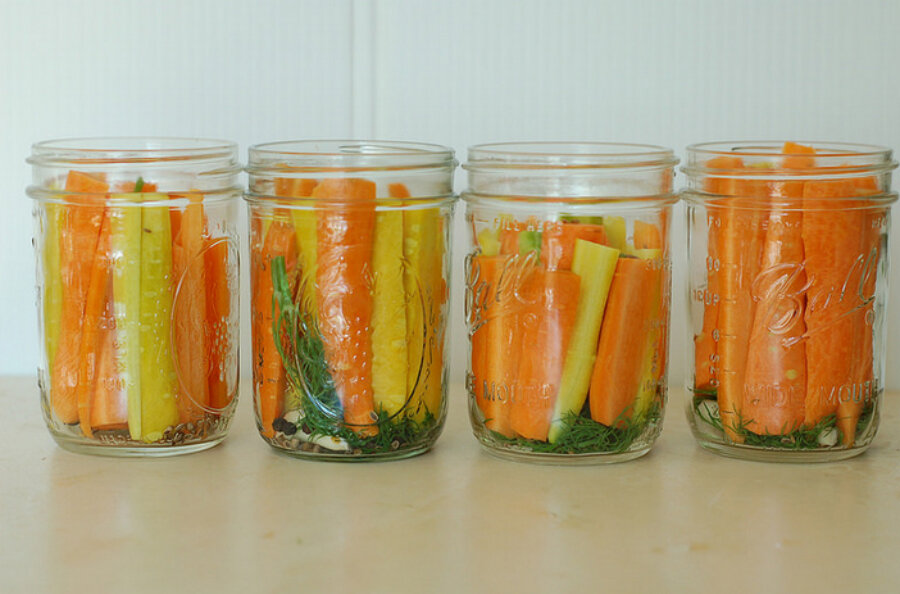Pickled carrots with coriander and cumin seed
Loading...
Crunchy, sweet, salty, piquant and wonderfully flavorful, these pickled carrots deserve top billing on any cheese or charcuterie plate.
The carrots in our garden are practically begging to be picked right now. And although my little boy bunnies will happily eat a couple of carrots a day, we planted a lot more than we can eat. This seemed like the perfect way to preserve some of them for future eating enjoyment.
If you don't grow your own carrots, pick up a bunch or two at your local farmers' market or farm stand.
The recipe below is adapted from the All New Ball Book of Canning and Preserving – one of the many recipes I'd tagged to try. I have both the old and the new Ball books and they're both great resources (click here and scroll down for more canning and preserving cookbooks, blogs and resources I like.)
As with any canning project, it's easy if you follow the steps and make sure you have everything you need ready to go (I often find that I have run out of lids or bands and have to run out to the store mid-project...)
If you feel overwhelmed by the prospect of canning something, you can always make these as refrigerator pickles – do everything through step 4 but stop short of actually processing the filled jars in the boiling water bath. Instead, just cover tightly and store in the fridge for up to a month. Enjoy!
If you're new to canning, start by reading this little primer I've put together.
Pickled Carrots with Coriander & Cumin Seed
Makes four 1-pint jars
3 pounds small (3- to 5-inch) carrots
3 cups white vinegar (5% acidity)
1/2 cup cider vinegar
1/4 cup non-iodized salt (you can either use canning salt or plain old sea salt but skip the iodized table salt as it imparts a yucky flavor to the food)
1/4 cup cane sugar
2 teaspoons coriander seeds
2 teaspoons cumin seed
2 teaspoons black peppercorns
1 teaspoon red pepper seed
4 garlic cloves, peeled
8 sprigs fresh dill
1. Bring a large pot of water to a boil and sterilize the jars, lids and bands.
2. While your jars are boiling, wash and peel the carrots and remove the tops. Trim any carrots that are longer than 4 inches so that they’ll fit comfortably within the jars and cut them in half lengthwise. Or, if you're using longer, fatter carrots, cut them to the right length to fit into your pint jars and slice them into quarters or sixths, depending on how fat they are.
3. Combine the vinegar, salt, sugar and water in a 4-qt. stainless steel saucepan. Bring to a boil over medium heat, stirring until salt and sugar dissolve then reduce the heat and simmer until ready to fill jars.
4. Divide the dried spices, garlic and fresh and dill evenly between the jars then pack tightly with the sliced. Ladle the hot pickling liquid into the jars to cover all the carrots, 1/2-inch headspace. Lay the lids on top and add the bands, tightening with your fingers. Using your jar lifter, place the jars in the boiling water bath and process for 15 minutes.
5. Remove the jars from the boiling water bath and let stand, undisturbed, at room temperature for 24 hours. Check the seals by removing the bands and picking the jar up by the lid only. If the lid is firm, the seal is good. If not, you can either open it up and re-process it but I would just keep that jar in the fridge. Store properly sealed jars in a cool, dark place for several weeks before tasting. Store jars in a cool, dark place for up to a year. Refrigerate after opening.
Related post on The Garden of Eating: Pickled Beets with Cumin & Cloves








